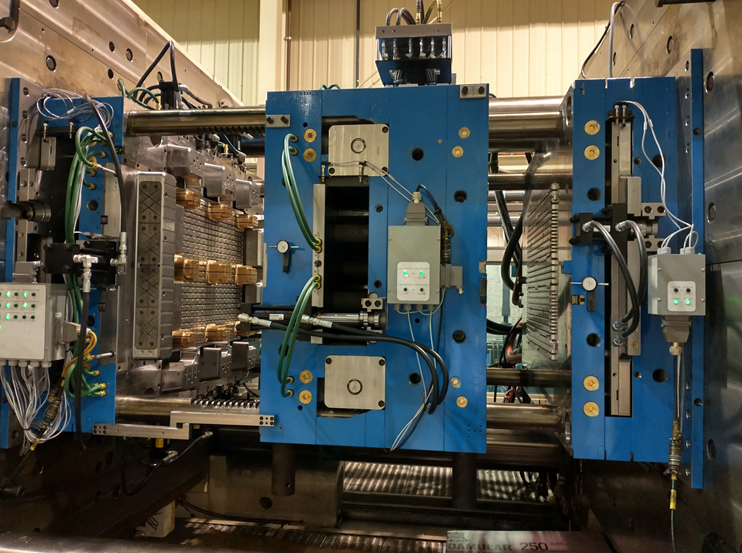Injection Molding: The Perfect Fusion of Craftsmanship and Functionality
In the vast world of modern manufacturing, injection molding, with its unique craftsmanship and broad application base, has become a bridge between design and production. As a product made by injection molding, injection molding not only demonstrates the exquisite combination of material science and mold technology, but also occupies an important position in many industries with its diverse forms, excellent performance, and cost-effectiveness. This article will explore the unique charm of this industrial product from the aspects of injection molding manufacturing process, material selection, design considerations and quality control.

Manufacturing Process: Transforming Plastic Particles into Precision Parts
Injection molding, as the name implies, is the process of injecting molten plastic material into the mold cavity under high pressure and then removing it from the mold after it cools and solidifies to form a plastic product of the desired shape and size. This process may seem simple, but it actually involves many links, such as precise operation of mechanical equipment, strict temperature control, precise time management and complex mold design. As the core equipment, the performance of the injection molding machine directly affects the quality and production efficiency of injection molded parts. The mold is the key factor that determines the shape, size and surface quality of injection molded parts. Its design must take into account the functional requirements, production efficiency and manufacturing cost of the product.
Material Selection: The Art of Balancing Performance and Cost
The performance of injection molded parts depends largely on the plastic material selected. There are many types of plastics on the market with different characteristics, such as the corrosion resistance of polyethylene (PE), the heat resistance of polypropylene (PP), the transparency of polystyrene (PS), the wear resistance of nylon (PA), and the overall performance of ABS resin. When selecting materials, manufacturers must take into account factors such as the product’s environment, mechanical properties, processing performance, cost, and environmental requirements, and strive to find the best balance between performance and cost.
Design Considerations: Bridging Creativity and Realization
The design of injection molded parts is a key link between product creativity and manufacturing realization. Designers must comprehensively consider the structural design, wall thickness distribution, mold release slope, rib arrangement, insert arrangement, and surface treatment of injection molded parts based on factors such as product functional requirements, appearance requirements, assembly relationship, and production process. Reasonable design can not only improve the performance and quality of products, but also reduce production costs and improve production efficiency. For example, reasonable wall thickness distribution can reduce material waste and shrinkage deformation, and appropriate demolding slope can ensure smooth demolding of products and avoid damage.

Quality Control: Ensuring Excellence in Every Product
Quality control of injection molded parts covers the entire production process, from raw material inspection, mold troubleshooting, injection molding process parameter setting to finished product inspection, and each link is crucial. Manufacturers must establish a complete quality management system and use advanced inspection equipment and technical means to conduct comprehensive inspections on the dimensional accuracy, appearance quality, physical properties, chemical properties, and environmental adaptability of injection molded parts. At the same time, it is also necessary to strengthen employee training, improve operational skills and quality awareness, and ensure that each product can meet design requirements and customer expectations.
As an important part of modern manufacturing, injection molded parts, with their unique process charm and broad application prospects, are constantly promoting the development and progress of all walks of life. From the excellence of manufacturing technology to the scientific and reasonable selection of materials, from the comprehensive and thoughtful design considerations to the strict control of quality control, each link embodies the wisdom and sweat of the manufacturers. In the future, with the continuous advancement of technology and the continuous expansion of the market, injection molded parts will surely open up a wider development space and bring more convenience and beauty to people’s lives.
이전의:Industrial plastic molds: the cornerstone of precision manufacturing
다음: Metal insert mold: the core technical element of precision manufacturing
-
Home Appliance Molding Components
2023-4-18
Home appliance molding components are an essential part of the manufacturing process for many household appliances, and ...
세부 정보보기 -
2023-4-26
Home Appliance Molding Parts Home appliances are essential for our daily lives, and molding parts play a crucial role in...
세부 정보보기 -
Innovative design, plastic large turnover box mold is more efficient
2024-3-19
Plastic large turnover box mold, this thing sounds very professional, but in fact it is a powerful assistant in our indu...
세부 정보보기 -
Creating a Perfect Plastic Chair Mold: A Guide for Manufacturers
2023-8-28
Introduction: The plastic chair industry has seen significant growth over the years, with manufacturers constantly striv...
세부 정보보기 -
Revolutionizing the Electronics Industry: The Innovation of the Electronics Mold
2023-7-12
The electronics industry has witnessed remarkable advancements over the years, with technological innovations shaping th...
세부 정보보기 -
Designing a High-Quality Plastic Beer Crate Mold for Optimum Manufacturing Efficiency
2023-6-19
Plastic beer crates are an essential item in the beverage industry. They are used to transport and store beer bottles, e...
세부 정보보기







